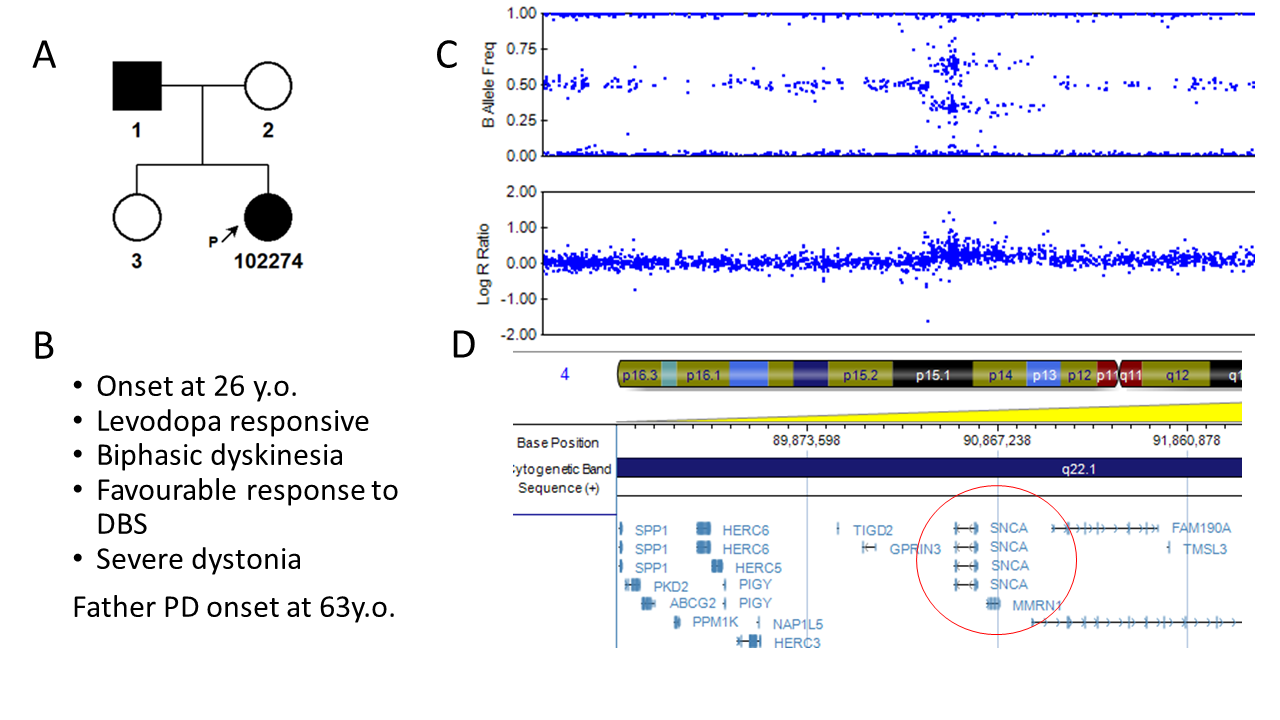Category: Parkinson's Disease: Genetics
Objective: To report a patient with Parkinson’s disease (PD) from Kazakhstan with a rare structural defect in the SNCA gene.
Background: Little is known about the genetic causes of PD in Central Asia, including Kazakhstan. SNCA was the first gene associated with autosomal-dominant PD. While SNCA point mutations have commonly been found in PD, there have only been 59 families reported worldwide (14 countries only) with SNCA multiplications1. Out of these, only 7 families had SNCA triplication, which results in the overproduction of the alpha-synuclein protein, leading to PD.
Method: The patient and his family were recruited to the Global Parkinson’s Genetic Program (GP2) initiative within Kazakhstani PD cohort. Exome sequencing was performed, which excluded deleterious variants in known and potential novel PD-associated genes. The proband’s sample was genotyped with the Illumina NeuroBooster Array, an array specially designed for neurodegenerative disease variants in diverse populations.
Results: The patient is a 36-year-old female of mixed Tatar-Russian ancestry living in Kazakhstan. There is no known consanguinity in the family. The first symptoms started at the age of 26 years with bradykinesia and left-hand tremor that has progressed rapidly. Gradually severe fixed distal dystonia in all limbs developed. Her parkinsonism is currently bilateral and asymmetric predominantly affecting the left limbs. Her MOCA score is 16. She has postural instability, orthostatic hypotension, significant drooling, and constipation. There are no RBD or urinary or psychiatric symptoms. There was initially a favorable response to levodopa, gradually leading to levodopa-induced dyskinesia and motor fluctuations. Her dystonia did not respond to trihexyphenidyl. Subthalamic nucleus deep brain stimulation reduced her tremor, dyskinesia, and dystonia severity. She is currently on levodopa 500mg/day and pramipexole 4.5 mg/day. NeuroBooster Array genotyping revealed a triplication of SNCA (Figure 1). Her father developed PD only at the age of 63, which suggests that he can have an SNCA duplication.
Conclusion: This is the first case of SNCA triplication associated with young-onset PD from Central Asia, which expands the geographical distribution of SNCA multiplication families.
References: 1. Book A, et al. A Meta-Analysis of α-Synuclein Multiplication in Familial Parkinsonism. Front Neurol. 2018 Dec 11;9:102.
To cite this abstract in AMA style:
R. Kaiyrzhanov, C. Shashkin, N. Zharkinbekova, V. Akhmetzhanov, Z. Myrzayev, A. Karimova, S. Aidarov, K. Mok, H. Houlden. An SNCA triplication in a Kazakhstani patient with young-onset Parkinson’s disease [abstract]. Mov Disord. 2023; 38 (suppl 1). https://www.mdsabstracts.org/abstract/an-snca-triplication-in-a-kazakhstani-patient-with-young-onset-parkinsons-disease/. Accessed June 30, 2025.« Back to 2023 International Congress
MDS Abstracts - https://www.mdsabstracts.org/abstract/an-snca-triplication-in-a-kazakhstani-patient-with-young-onset-parkinsons-disease/

